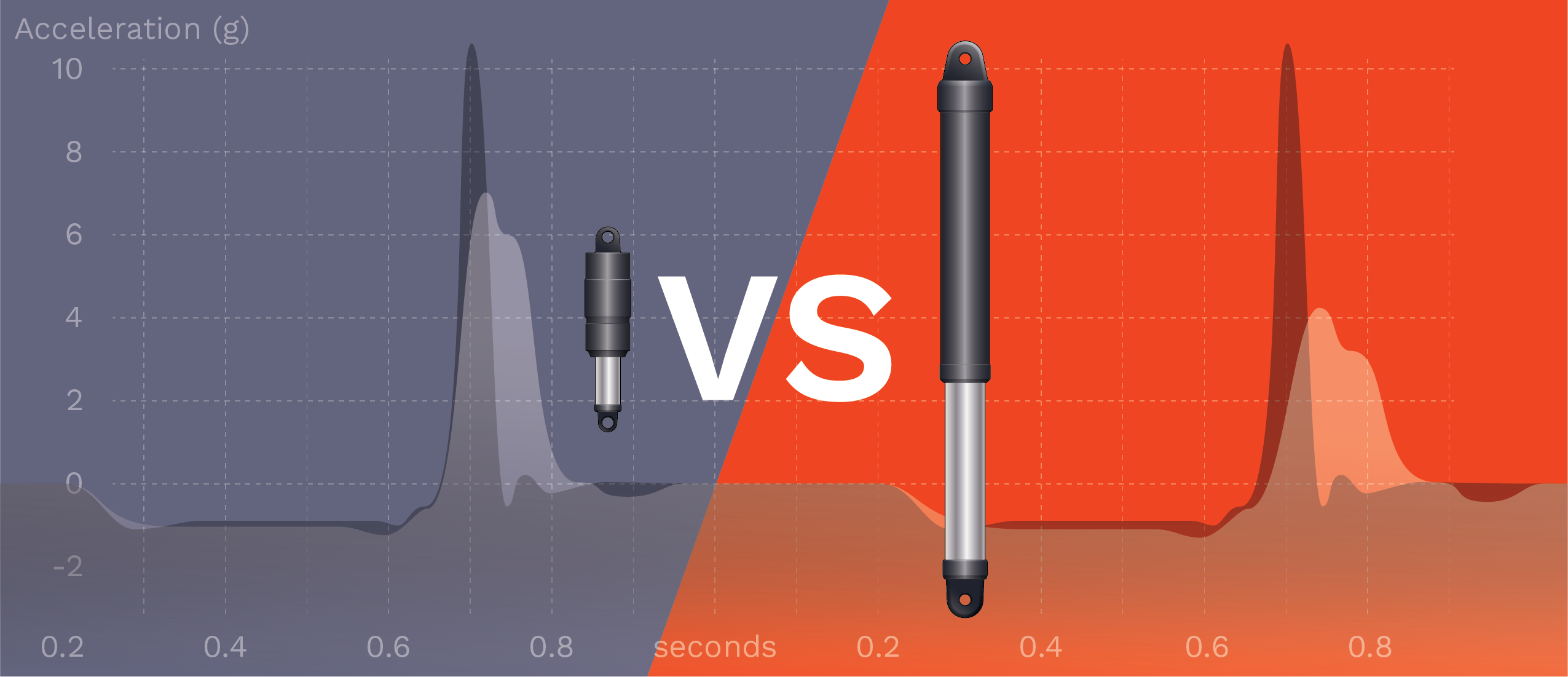-
United Safety & Survivability Corporation
101 Gordon Drive
Exton, PA 19341, United States - 610-265-3610
- info@shoxs.com
You have no items in your cart, add some on the products page.


The car closer to the wall can be expected to see ten times the accelerations felt in the car farther away. You can appreciate just how great a luxury stopping distance is when it comes to decelerating a moving body.
At its core, shock-mitigating safety gear consists of a medium or mechanism separating an input surface, such as a boat’s deck, and a person seeking to reduce their exposure. When all goes well, an impact is attenuated as it passes through the mechanism, resulting in a gentler motion for the person using it. But how is the attenuation achieved? The answer, in all but the most exotic cases, comes down to a compression or material deformation of the underlying device.
Just like the cars speeding towards a brick wall, the ability of a shock-mitigating device to lessen an impact and ensure a smooth ride is dependent on its stopping distance.
On the water, a boat’s hull-design, speed, and the sea-state are the dominant factors that dictate the velocity change during a wave slam. Sometimes, impacts cannot be eliminated on the water by avoiding waves or reducing speeds. Even the savviest operator can be caught off-guard. This is where shock-mitigating gear comes into play, and it fulfills its purpose by increasing the time duration of each impact, so that it is less severe. The longer it takes to undergo the impact velocity change, the smoother the ride will be, and adding suspension travel to a shock-mitigating device is a sensible way to achieve this. It’s akin to giving our imaginary cars more braking distance before the wall.
This explains why a 1” platform of vibration-muffling foam can’t compete with a 4” travel suspension system when it comes to mitigating shocks. Likewise, a 4” travel suspension will be easily outgunned by its 10” rival. The argument generally holds for suspension seats, matting materials, and any mechanism that mitigate shocks through mechanical deformations. The principle applies to impacts in any direction, including the lateral. If only a short travel distance is provided, only a modicum of shock-mitigation can be expected.
This is not to say that suspension travel distance is the only consideration. Far from it, there are space and weight limitations on boat, and ergonomics must be a top priority. Operators must interact with controls, maintain a low profile, and not sacrifice their sightlines. But when it comes to shock-mitigation, a bigger air shock really is better, and long-travel suspensions will yield the best results.